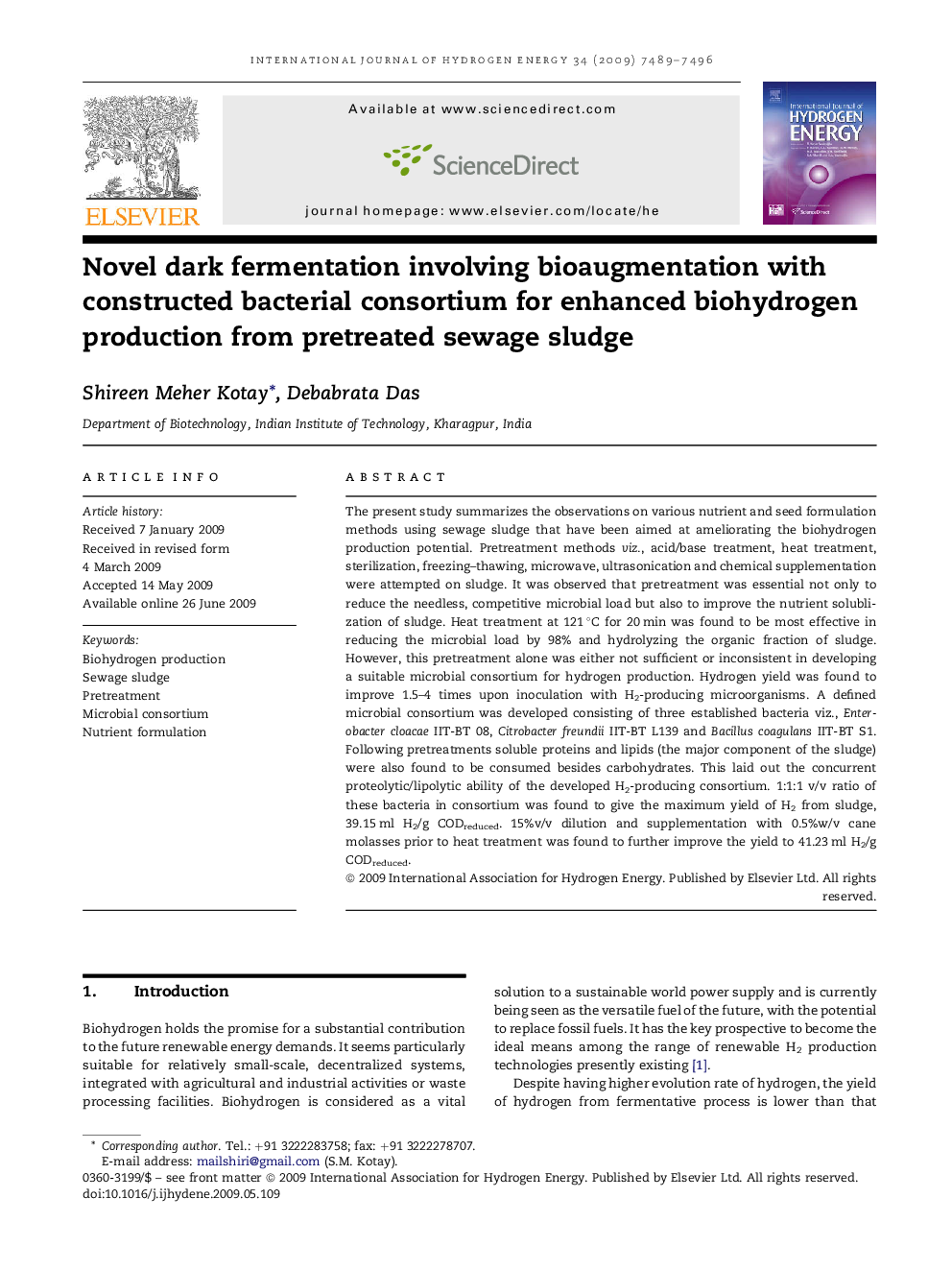| Article ID | Journal | Published Year | Pages | File Type |
|---|---|---|---|---|
| 1281139 | International Journal of Hydrogen Energy | 2009 | 8 Pages |
The present study summarizes the observations on various nutrient and seed formulation methods using sewage sludge that have been aimed at ameliorating the biohydrogen production potential. Pretreatment methods viz., acid/base treatment, heat treatment, sterilization, freezing–thawing, microwave, ultrasonication and chemical supplementation were attempted on sludge. It was observed that pretreatment was essential not only to reduce the needless, competitive microbial load but also to improve the nutrient solublization of sludge. Heat treatment at 121 °C for 20 min was found to be most effective in reducing the microbial load by 98% and hydrolyzing the organic fraction of sludge. However, this pretreatment alone was either not sufficient or inconsistent in developing a suitable microbial consortium for hydrogen production. Hydrogen yield was found to improve 1.5–4 times upon inoculation with H2-producing microorganisms. A defined microbial consortium was developed consisting of three established bacteria viz., Enterobacter cloacae IIT-BT 08, Citrobacter freundii IIT-BT L139 and Bacillus coagulans IIT-BT S1. Following pretreatments soluble proteins and lipids (the major component of the sludge) were also found to be consumed besides carbohydrates. This laid out the concurrent proteolytic/lipolytic ability of the developed H2-producing consortium. 1:1:1 v/v ratio of these bacteria in consortium was found to give the maximum yield of H2 from sludge, 39.15 ml H2/g CODreduced. 15%v/v dilution and supplementation with 0.5%w/v cane molasses prior to heat treatment was found to further improve the yield to 41.23 ml H2/g CODreduced.
